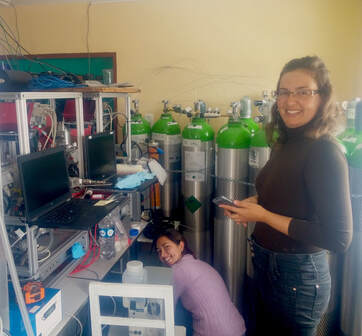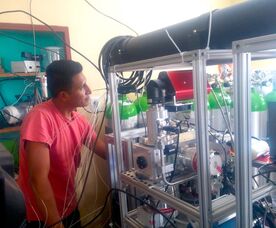|
Quadrupole Aerosol Chemical Speciation Monitor (Q-ACSM)
Project in collaboration with Univ. São Paulo- closed (2018-2020) The Quadrupole Aerosol Chemical Speciation Monitor (Aerodyne Research Inc.) is able to routinely characterize non-refractory submicron aerosol species - organics, nitrate, sulfate, ammonium and chloride - with the time resolution from 15 minutes up. The instrument consists of a particle sampling inlet, three vacuum chambers and a residual gas analyzer mass spectrometer. Particles are first focused by using an aerodynamic lens system into a narrow particle beam, which is transmitted through three vacuum chambers. In the third chamber, the particle beam is directed into a hot tungsten oven (600°C) where particles are flash-vaporized and ionized with a 70 eV electron impact ionizer and detected with a quadrupole mass spectrometer. The Q-ACSM from the University of São Paulo was set up in Chacaltaya from March 2018 to February 2020 with some interruptions. Due to the low mass concentrations measured at this station, the instrument was run with 30 minutes time resolution. |

